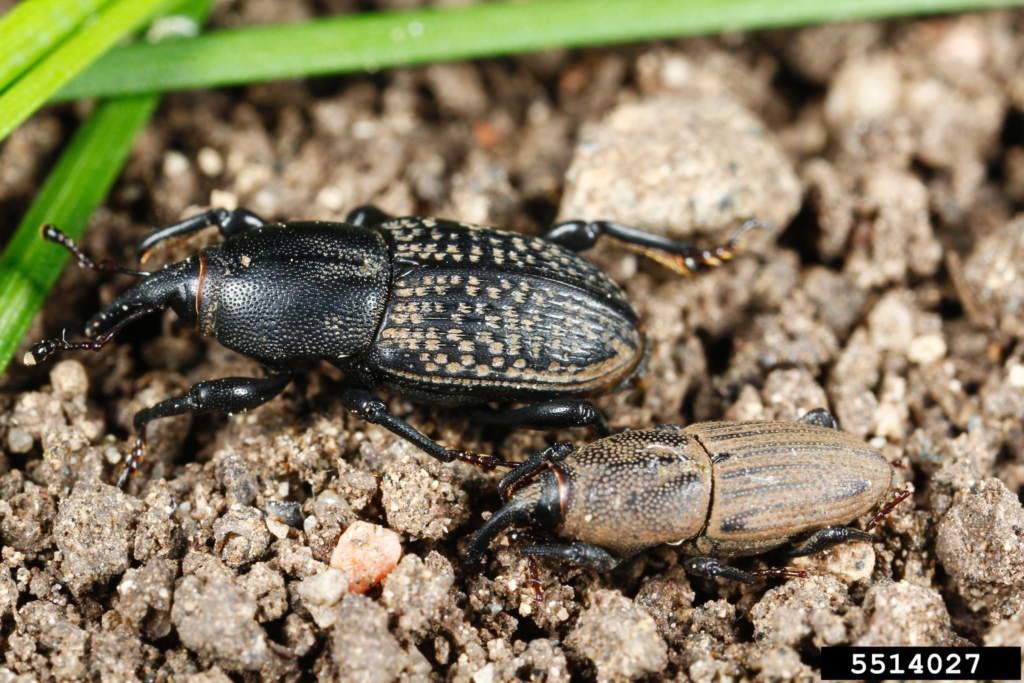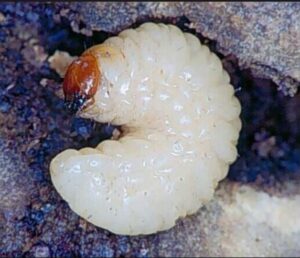
As summer arrives and your lawn becomes a sanctuary, it’s crucial to be aware of potential threats like billbugs, often mistaken for drought damage but capable of causing significant harm to your turfgrass.
Identifying Billbugs
Billbugs are small insects with a distinctive long snout. They lay eggs in grass stems, where larvae hatch and feed inside stems, crowns, and roots. This feeding results in patches of grass turning white or straw-colored, easily pulled out at ground level. The larvae look similar to grubs but lack the front arms of a grub. The larvae cause damage by chewing their way out of the grass blade, leaving behind hollow stems and sawdust-like frass.

Signs of Infestation
Detecting billbugs can be tricky, as damage often becomes apparent only after significant harm. The “tug test” reveals affected areas that lift easily from the ground, showing hollow stems and sawdust-like frass at the base.
Lifecycle and Control
- Larvae Treatment: Target larvae in the soil, but those in grass blades may continue causing damage.
- Adult Treatment: Applied during adult activity periods to deter egg-laying.
- Grub Prevention: Some active ingredients in grub prevention applications can reduce larval counts, but have timeline restrictions, so ongoing vigilance is necessary.
Recovery and Prevention
Repair damaged areas with reseeding and monitor your lawn closely for subsequent seasons. Effective billbug management may take years of consistent effort, but early detection and intervention are crucial.
If you suspect billbug damage, consult Lawn Doctor right away for tailored solutions to protect and restore your turf. With proactive care, your lawn can remain vibrant and resilient year-round.


